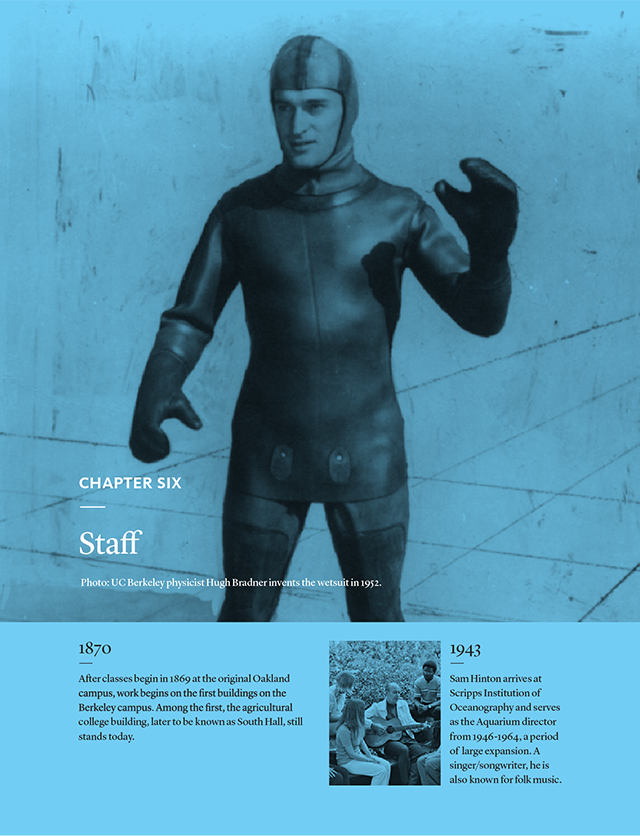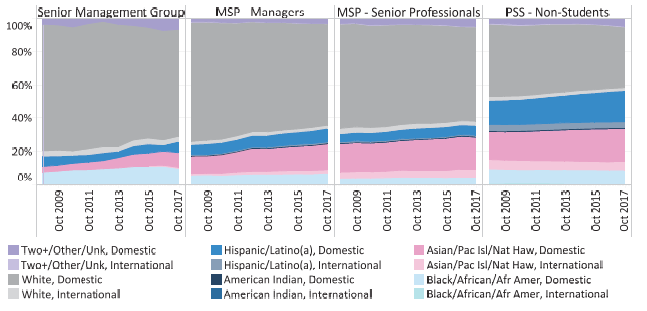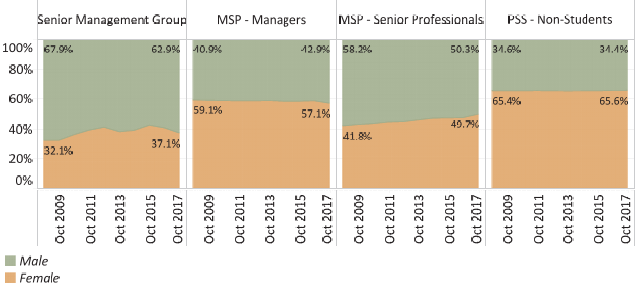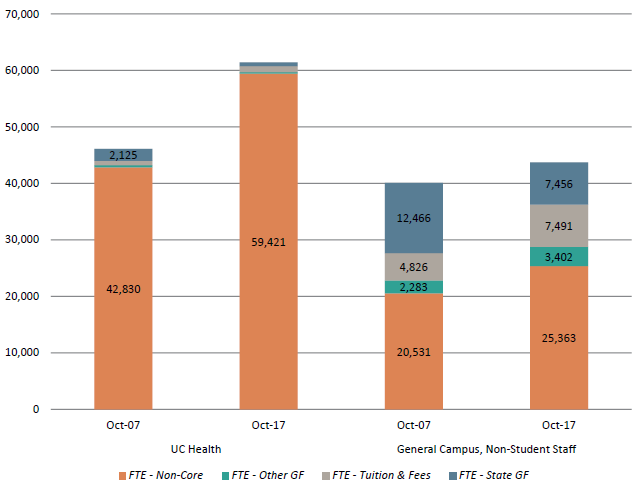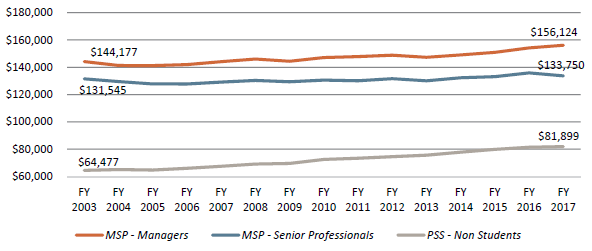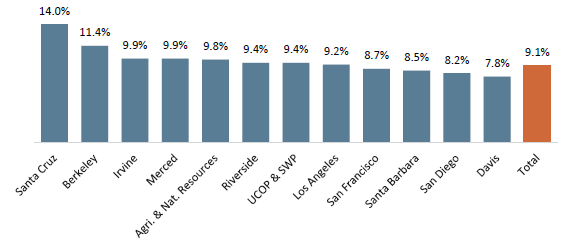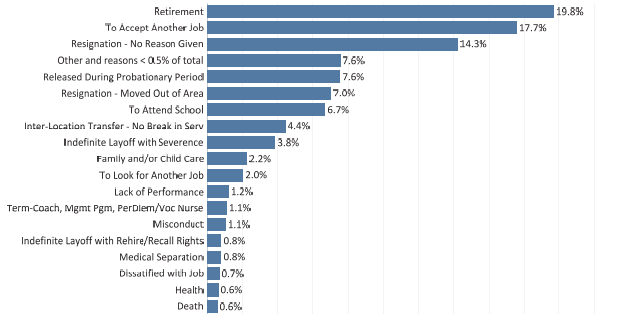History The three-pronged mission of the University of California includes undergraduate, graduate and professional education, research, and public service, none of which is accomplished without the support of staff who organize and facilitate all that is required to do the work of the University.
Many arms of the University are wholly run by staff, including UC Press, founded in 1893. Staff are vital in the creation and running of UC’s rich collection of art, history, cultural and wildlife museums and botanical gardens. Anchored by the establishment of The Bancroft Library in 1905, the University of California libraries comprise the largest university research library in the world and is largely managed and run solely by staff.
Overview Non-academic staff employees constitute about 71 percent of UC’s workforce and are responsible for health services, student services, instruction and research support, compliance and general administration. In October 2017, this group included 154,904 individuals, about a third of who are part-time, particularly student workers. Overall, this workforce represented 113,765.8 full-time equivalent (FTE) employees in that month.
Staff groups and workforce diversity • UC Health employs over half of staff FTE as doctors, nurses, administrators, technicians and allied health professionals. About 97 percent of these employees are supported by non-core funds, typically the revenues generated by hospital services.
• Student workers for the general campus (non-health) are predominately part-time. While their headcount is 34,798, they comprise 8,642.2 FTE. Students often work on campus as part of their financial aid packages or for research experience.
• General campus, non-student staff are the remainder, at 43,712.4 FTE. This includes student services employees, librarians, IT specialists, research administration, laboratory staff, food and auxiliary service workers, accountants, maintenance and janitorial staff, safety workers and analysts.
UC is dedicated to building a more diverse workforce, particularly including those from under-represented racial and ethnic populations in the U.S. Staff at UC are majority female and increasingly ethnically diverse across all employee groups. However, there are variations among the different employee groups, as more senior positions tend to be less female and more white. A more diverse academic and staff population is an increasingly important measure of a great university.
Staff compensatioN Over the past decade, UC has relied less on core funds (state funds, tuition and fees, and other general funds) to cover staff. While UC has over 21,000 more staff than ten years ago, over 2,000 fewer overall FTE are paid on core funds. Even as tuition has increased to cover losses in state funding, less than 20 percent of staff are paid using core funds of any type.
General campus career staff salaries have stayed relatively flat compared to inflation for the past 15 years and have increased modestly for some UC Health professionals. Staff salaries tend to lag comparable market positions, and the lack of increases beyond inflation could affect staff satisfaction and turnover. Chancellor and system leader compensation falls on the lower end when compared to peer institutions.
Staff separations and satisfaction UC’s separation rate among career staff is about 9.1 percent, which has been relatively steady for the past decade. About 20 percent of staff separations are due to retirement and reflect the baby boomer generation exiting the workforce. Still, a large portion of separations is due to resignation for various reasons. The 2017 UC Overall Employee Engagement Survey shows some improvement in engagement, communication and performance management from 2015 but that UC is still below the national norm in eight out of nine employee satisfaction categories.
For more informatioN

